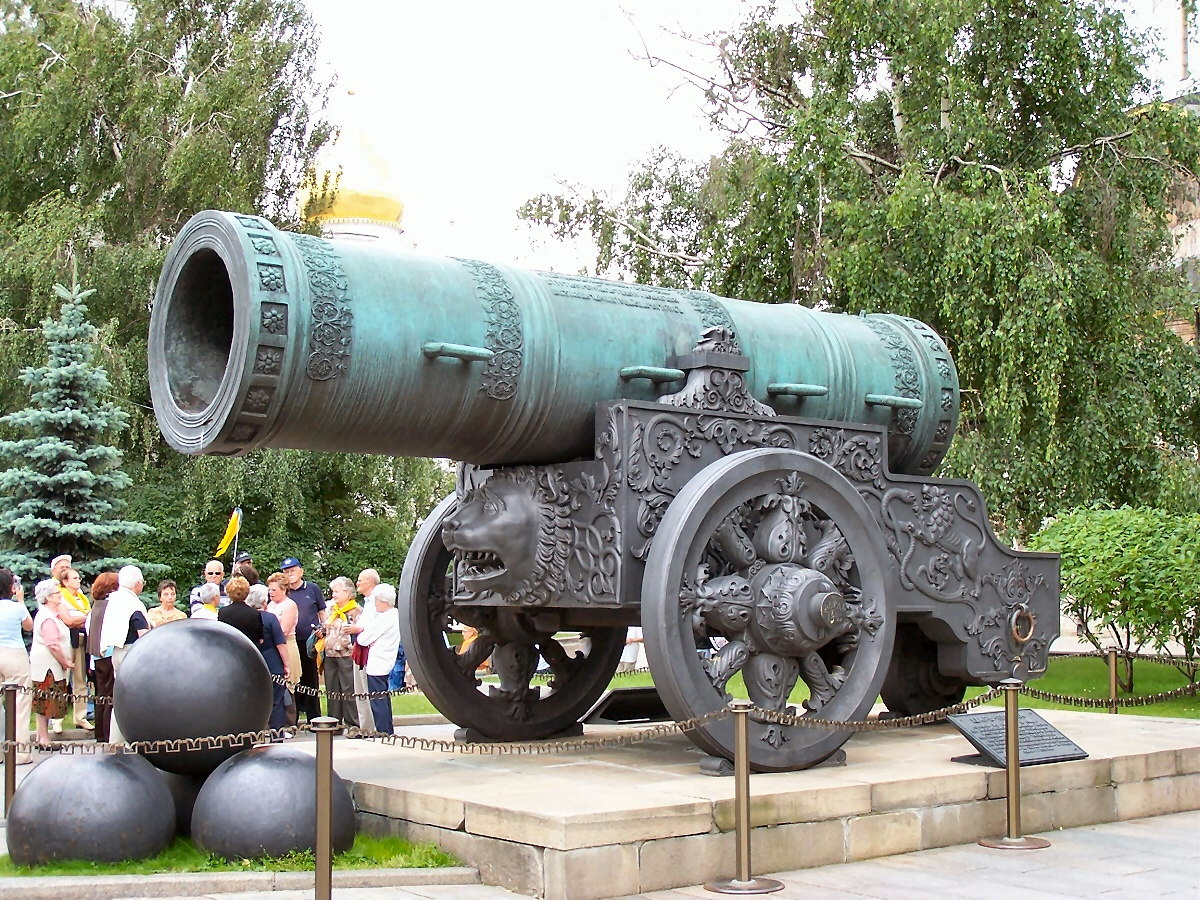1. The Tsar Cannon

The aptly named Tsar Cannon is the largest old-fashioned cannon ever made. It was built by the Russians in 1586, but it was never used in combat.
2. The Paris Gun
The Paris Gun was a long-range siege cannon that the Germans used to bomb Paris during WWI. This gun had such a great range that the French thought they were being bombed by a new type of high-altitude zeppelin rather than a cannon.
3. V-3 Cannon
The Nazis had planned to use this super-cannon to bomb London from a secret bunker across the English Channel. However, it was damaged beyond repair before it was completed.
4. 2B1 Oka
This self-propelled cannon made by the Soviets was so powerful that its recoil caused damage to the vehicle itself.
5. Mallet's Mortar
This cannon was built by the British in 1857, but it was never used in combat. Just look at the size of those projectiles!!





